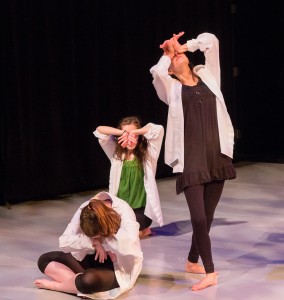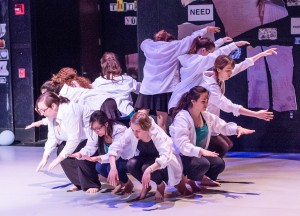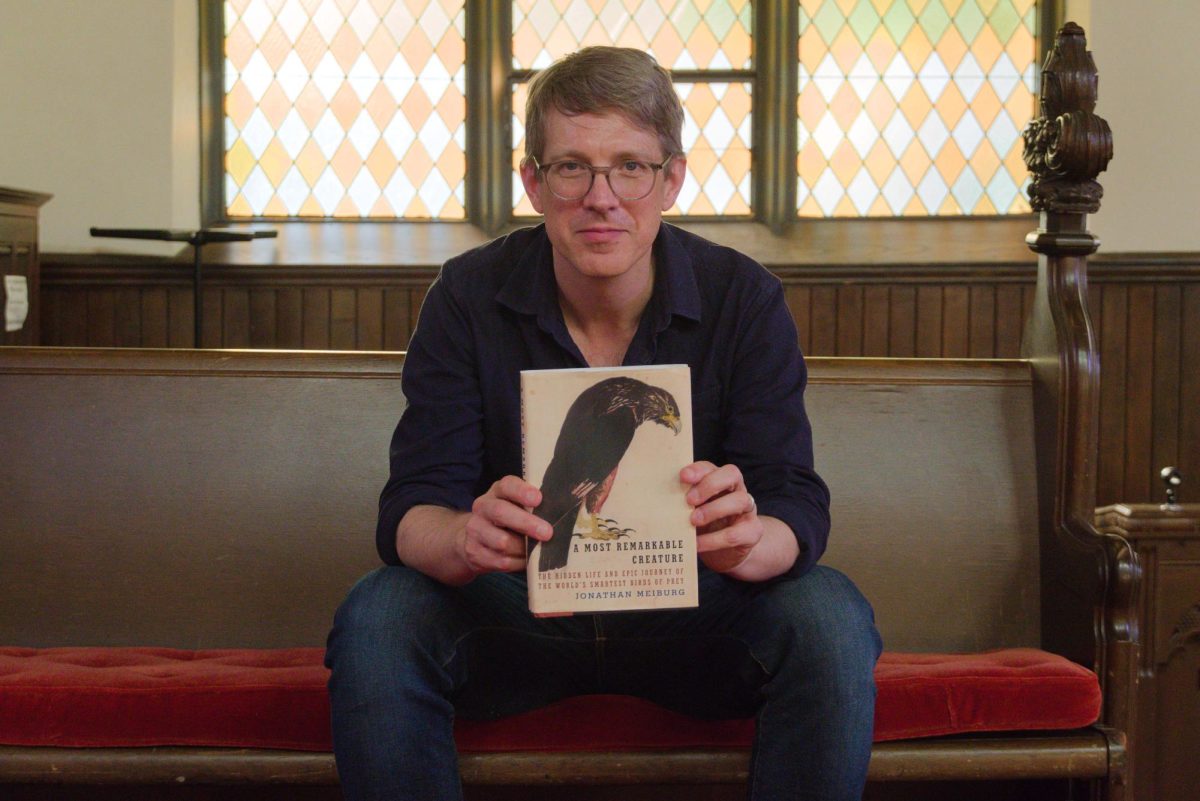Last spring, when Celeste Miller, Theatre, went to Chicago for the “Too Big” conference on communicating the economy through dance, she was far from inspired by the concept. However, after further evaluation, she saw the opportunity for personal growth.
“I didn’t want to make dances about the economy,” Miller said. “How [was] I going to find my muse inside of that? But that sort of said to me, ‘That’s a very good topic to take on.’”
The conference helped Miller pose questions regarding to what we assign value.
“Our current system is built on notions of abundance and scarcity and value identified with [the] monetary,” she said.
Miller is the director of Dance Ensemble, which has been collaborating with ACTivate since last spring to put together a production that examines the current economic climate through movement. Throughout the show, the performance literally becomes a conversation built off of a movement-signified language developed early on. The audience will find themselves translating each leg extension and pose into literal sentences, being able to pick out words and phrases as the dancers move across the stage.
For the dancers, the production has become very much about learning through their movement,
“[We’re] not just creating dance movements, but also working on researching and learning more about the economy and what’s going on behind it,” said Rosie Fuqua ’16.
The performance has become a medium for education—an alternative approach to understanding a concept that plagues the minds of generations now entering the workforce. The show integrates audience participation, engaging audience members to evaluate their own perspectives and experiences, and even invites audience facilitation and participation in the performance itself. In this way, the performance becomes a means of audience education and reflection.
In a particular portion of the show, the dancers move as they are underscored by recordings of their own questions about their economic future. The questions they pose, “Will I be loved?” and “Will I find a job?” communicate the ubiquitous nature of economy. The dancers found it surfacing in more than just their financial lives, discovering its influence in their ability to find love and happiness. The performance develops as a criticism to the way capitalism has infiltrated our interpretations of success and self.
The solo performances, choreographed by individual members of the ensemble, became a medium to look at the economy through their own personal lens.
“I enjoy my piece because it was an opportunity to really delve into the subject the way I wanted to, and gave me an opportunity to make my own interpretation that was maybe different than the ensemble,” Fuqua said, referring to her individual performance.
Two of the ensemble members, Benji Zeledon and Ana Novak, both ’14, are engaging in MAPs with this performance that pursue the focal concept of abundance and scarcity. Novak’s piece looks through the lens of science and science education, whereas Zeledon’s evaluates the concepts of “want” and “need.”
The show, titled “Exploratorium: Dancing about the economy,” which has performances on Friday and Saturday evening at 7:30 p.m., is a precursor to a larger show in the spring as part of the “Too Big” project that Miller learned about last year.
“Finding ways to make [the economy] interesting and to also make it beautiful to watch has been difficult,” Fuqua said.
However, the dancers have risen to the challenge and created some incredibly beautiful works. One of which, a duet, captures the audience’s attention with its intense fluidity of movement as it examines the culture that prides itself in ‘white collar’ jobs—a concept mirrored in the final group performance where the dancers seem to move as one cohesive unit.
“I’ve never been a precise mover … so the precise movement has been crazy difficult, but I’ve learned a lot about how I operate,” Zeledon said.
The movements require a consciousness of both the individual dancer’s movement, as well as the movement of the collective, an idea that seems to mirror the position of the individual in the economy.
Abundance and scarcity are terms used to evaluate a prosperous and suffering economy, but those terms mean more in the experiences of each person. Dance Ensemble and ACTivate use movement to create a conversation about the economy. With the use of fluidity, rigidity, singular interpretation and group cohesion, the audience will find themselves engaged with the performance on every level. The group will perform Friday and Saturday evening at 7:30 p.m. and Sunday at 1 p.m. in Flanagan Studio Theatre, but the audience is encouraged to come a half hour early to participate in a pre-show activity.

























































